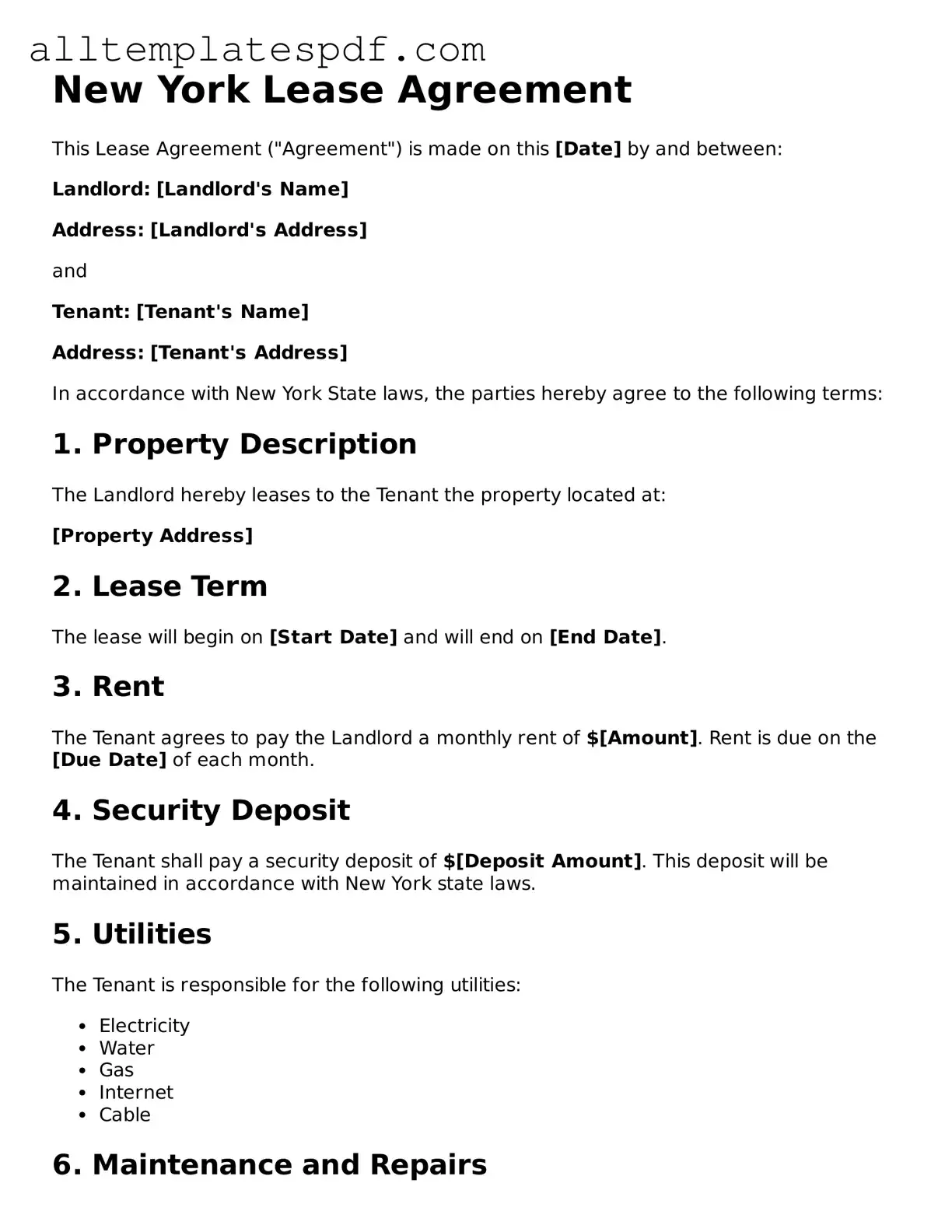Filling out a New York Lease Agreement form can be a straightforward process, but many individuals make common mistakes that can lead to complications down the line. One frequent error is failing to provide accurate personal information. This includes the names of all tenants and landlords, as well as correct contact details. Incomplete or incorrect information can create confusion and may complicate communication between parties.
Another common mistake involves overlooking the lease term. Tenants often neglect to specify the start and end dates of the lease, which can lead to misunderstandings about the duration of the rental agreement. Clearly defining the lease term is crucial, as it sets expectations for both landlords and tenants regarding occupancy and rental payments.
People sometimes forget to include specific terms regarding rent payment. This includes the amount of rent due, the due date, and acceptable payment methods. Without this information, disputes may arise over when and how rent should be paid, potentially leading to late fees or eviction notices.
Additionally, many individuals fail to review and understand the rules regarding security deposits. The lease should clearly state the amount of the deposit, the conditions under which it may be withheld, and the timeline for its return after the lease ends. Misunderstanding these terms can result in financial losses or legal disputes.
Lastly, individuals often neglect to read the entire lease agreement thoroughly before signing. This oversight can lead to agreeing to terms that are unfavorable or unclear. Taking the time to understand each provision in the lease can prevent future conflicts and ensure that all parties are on the same page.
